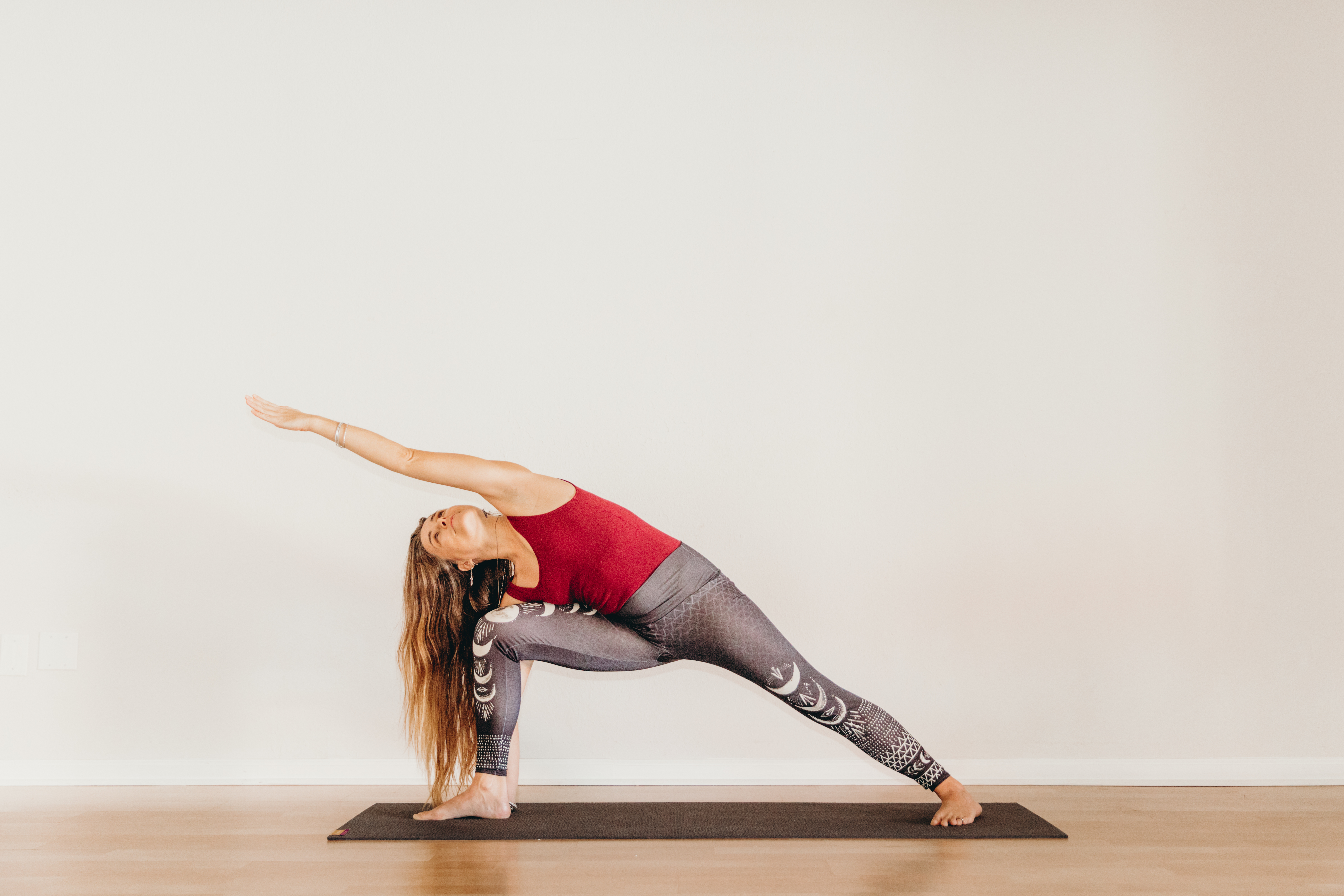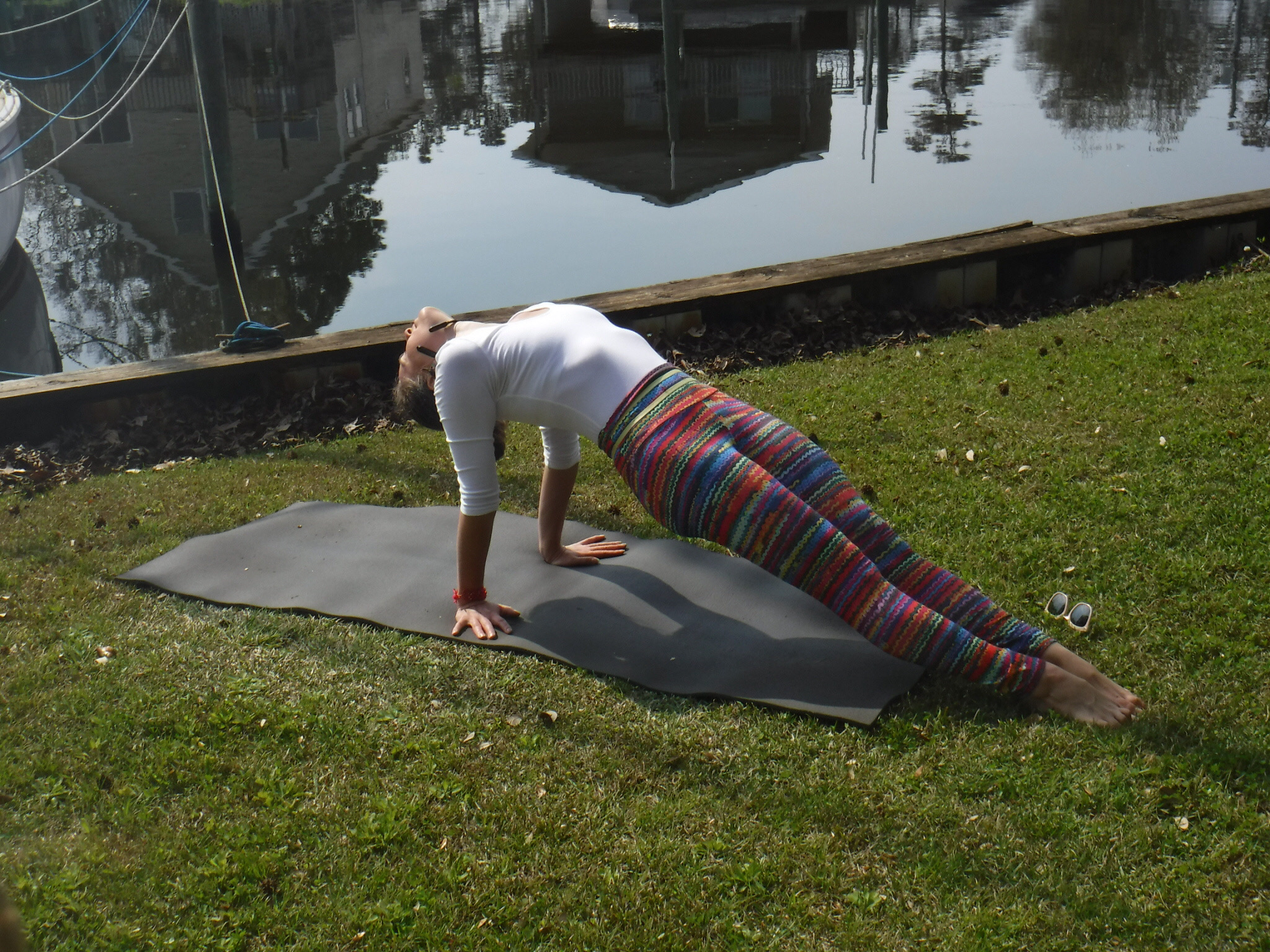MICHELLE & PATTABHI JOIS
MICHELLE & PATTABHI JOIS
MICHELLE & SHARATH
The Practice: What is the Tradition?
“You wake up, brush your teeth, wash your face, do your practice.” – Tim Miller
Ashtanga Yoga is a living, breathing tradition colored by its many teachers and practitioners that continue to keep it alive through their dedication to this unique lifestyle.
We are taught to take traditional practice six days a week, with our day of rest on Saturdays. We also take off practice to observe New Moons and Full Moons. Women take an additional 2-3 days off a month for their personal Moon Days, also known as Ladies’ Holiday.
It is my intention to make the practice assessable to you based on your current needs, abilities, and within your given lifestyle. It is valuable to understand what the Tradition is in its fullest expression and from this point adapt it to your current needs.
Although we aim to stay in vibration with this tradition, it is important to be flexible within our discipline. For example, if Saturday is a good day to practice and Tuesday is not, take off Tuesday and practice Saturday instead. No problem. Yoga is adaptable and must be fluid to accommodate our needs.
Why is Saturday the traditional day off?
All the days of the week are ruled by planets which is obvious when you look at their names. Saturday is ruled by the planet Saturn. In Vedic Astrology Saturn is known as the “Great Malefic.” It is a difficult planet because it is the teacher of hard lessons. Saturn is known as “Father Time,” is connected to karma, and has an energy similar to the stern father that instills discipline and says “no,” hence the rings around the planet, symbolizing constriction. Lessons such as patience, wisdom, endurance, and responsibility are not easy lessons to learn. For this reason, Saturday is a good day to take rest and reflection.
Why do we rest on New Moons and Full Moons?
Like all things of a watery nature (human beings are about 70% water), we are affected by the phases of the moon. The phases of the moon are determined by the moon’s relative position to the sun. Full moons occur when they are in opposition and new moons when they are in conjunction. Both sun and moon exert a gravitational pull on the earth. Their relative positions create different energetic experiences that can be compared to the breath cycle. The full moon energy corresponds to the end of the inhalation when the force of prana is greatest. This is an expansive, upward moving force that makes us feel energetic and emotional, but not well grounded. The Upanishads state that the main prana lives in the head. During the full moon we tend to be more headstrong.
The new moon energy corresponds to the end of the exhalation when the force of apana is greatest. Apana is a contracting, downward moving force that makes us feel calm and grounded, but dense and disinclined towards physical exertion.
The Farmers Almanac recommends planting seeds at the new moon when the rooting force is strongest and transplanting at the full moon when the flowering force is strongest.
Practicing Ashtanga Yoga over time makes us more attuned to natural cycles. Observing moon days is one way to recognize and honor the rhythms of nature so we can live in greater harmony with it.
-Tim Miller
Why do we take off practice during menstruation?
When you are menstruating the forces in your body are trying to move down and out (apana). The practice tends to lift everything up. My teacher tells us to lift our “apana towards our agni (digestive fire).” Energetically, this works against the natural flow of your cycle.
A break from exercise of any kind is always wise during menstruation. To me, it is intuitive. I feel dense and lethargic. The body needs rest so it can undergo its monthly process.
If you are only able to attend a yoga class one time a week, and would still like to come, that is not a problem. Come to your weekly class and modify the sequence. Do not do any inversions during menstruation.
If you are looking for more detailed instruction on practice during menstruation read my blog We Are the Moon by clicking here.
How do I adapt the practice to my needs?
You want to keep the method and science of the practice clear and the sequencing in order, which means you must know what it is. From this place, you can choose to modify the sequence and / or the way you approach postures based on your needs.
For example, if you only have 35 minutes to practice because you have to pick your child up, go to work, etc.., I recommend you talk to your teacher or refer to a supplementary material and do a shorter form of the practice.
If all else fails you do the “daily minimum.” The daily minimum is:
Three Sun Salutation As
Three Sun Salutation Bs
Three Closing Postures
This only takes between 10-15 minutes to complete. Start here and if you have more time, or feel better than you thought, you can go further through the sequence, and do some closing postures.
The daily minimum is also a good way to keep you practicing on those days your resistance is high. Do not pressure yourself to finish the entire series. Aim for the minimum and more often than not, you will feel great! Then, you may choose to do more postures.
Daily practice helps increase self esteem and maintain a healthy lifestyle. Find a way to make the practice fit into your daily / weekly routine. Start where you are and let it grow.
What if I am sick?
It is true the body needs rest when you are sick. Therefore, you may not want to do a full practice. However, practicing the daily minimum with a restorative savasana will help maintain a healthy respiratory system, increase blood flow, and keep your strength and immunity high. Enhance your savasana if you would like with a warm cloth over your face.
If you have to miss a day or two depending on the sickness, utilize your Saturday or Moon Days to make it up.
What if I have an injury?
If you have an injury you should maintain practice, however you should accommodate your practice in a way that facilitates healing. If you immobilize the injury too much, the scar tissue will lock up. You need to keep your blood flowing for healing to occur.
If you overstretched something, continuing to overstretch will not facilitate healing. You may for a time have to change your approach to your practice, do not go as deep into the postures, modify them in some way, or leave certain postures and / or transitions out.
Find the middle ground. Yoga should heal your body, not harm it. Talk to your teacher about the best way to work through a specific injury.
It is important you do not stop practicing. There is also a mental aspect to the injury and if you do not keep moving and breathing you may not move through this. Breathe and move forward slowly and steadily with loving awareness.
Community Refuge and Embodiment of the Living Tradition
Pattabhi Jois's suggestion is to practice Mysore class 5 days a week along with one led class a week to clean up your practice. It is easy to get loose with the science of your practice when you are always practicing Mysore. In led class you are brought back to the traditional counts which contain the wisdom and the science of the practice.
For practitioners who want to live the tradition to its fullest extent, I suggest developing a home practice and checking in with me for my weekly and monthly class offerings and attend workshops, intensives, or retreats to deepen your practice, keep you inspired, and facilitate your growth. For those of you who love the practice and benefit from it, but still want to devote to other traditions and practices, my advice is similar. Choose a schedule which integrates some committed practice days to Ashtanga Yoga giving yourself other days for other practices. Check in with me regularly for my offerings to continue your growth and inspiration. It does not matter which path you choose, or which path chooses you, consistency is the key to success in yoga. Stay true to the commitment you are able to make. It will benefit your growth and state of mind immensely. Private consultations are also an option if you would like to speak to me about something specific concerning your practice in a safe space.
I am always trying to follow the flow of the crowd. Let me know if you have any suggestions or requests on classes or workshops to accommodate your needs.
Thank you for taking the time to learn about this beautiful practice. It was a pleasure to have this time with you.
Love,
Michelle Wade (formerly known as Dorer)
Owner, Director, and Teacher - Ashtanga Yoga Outer Banks, NC


